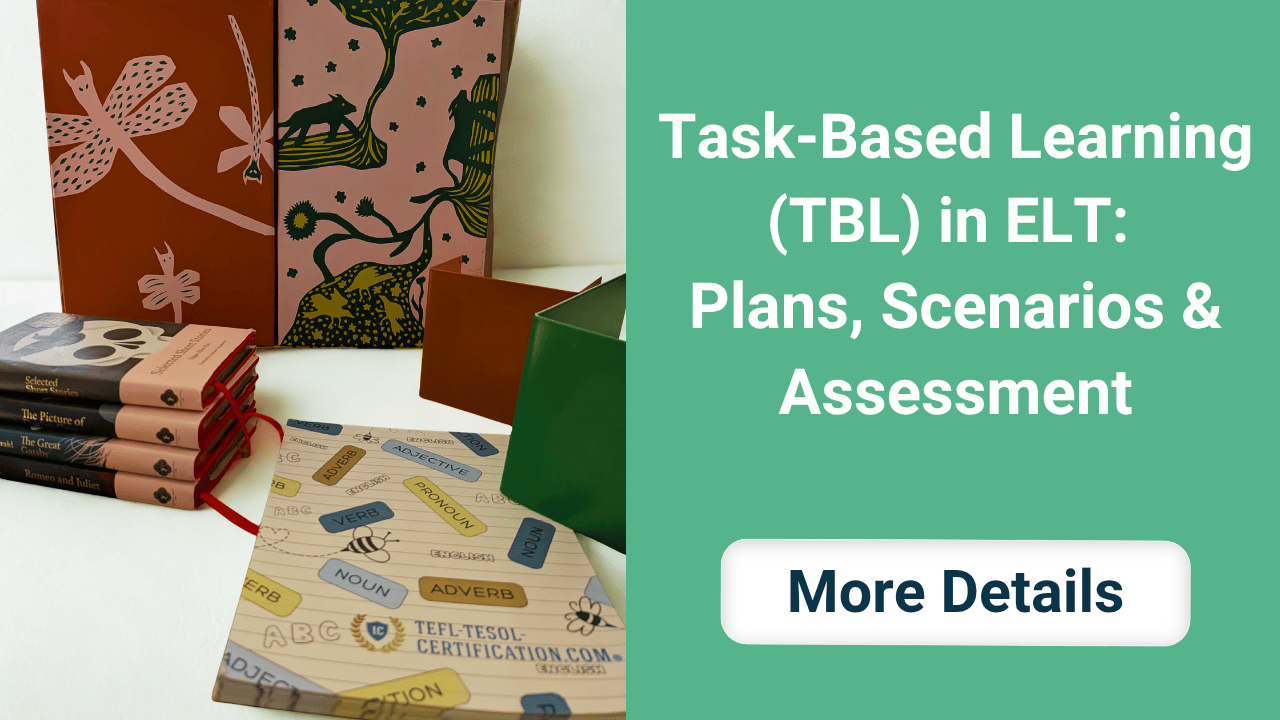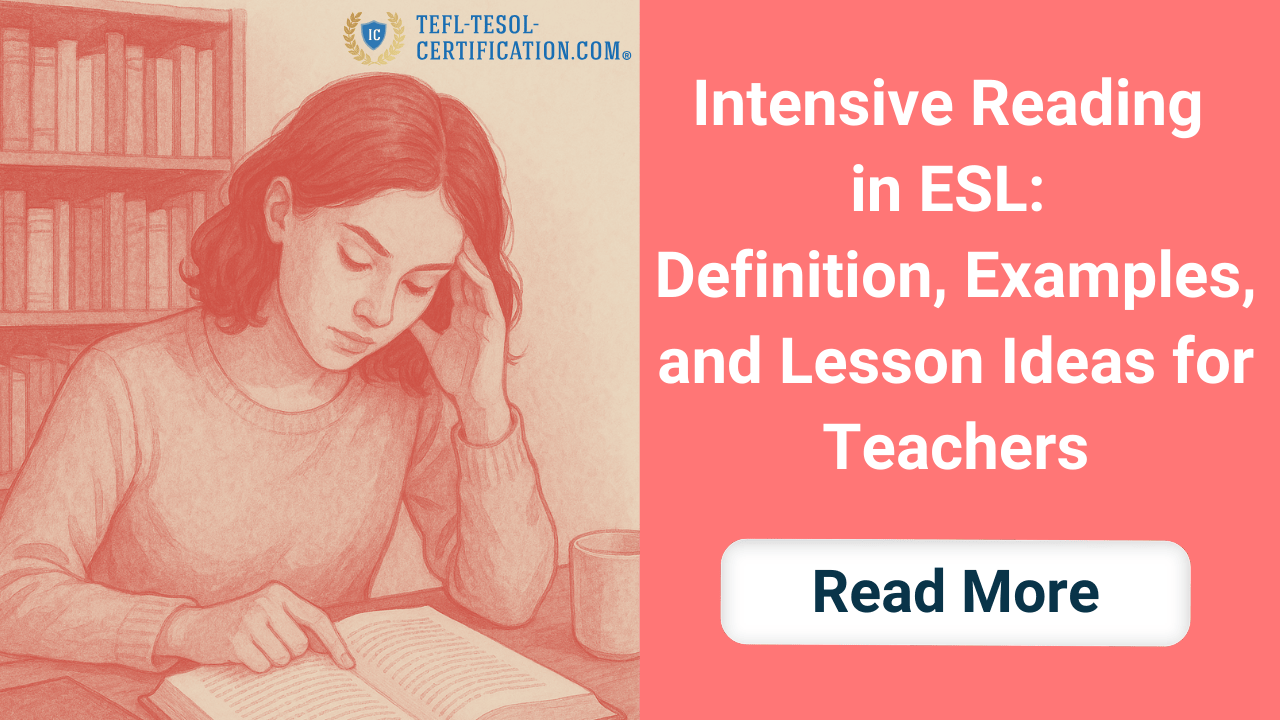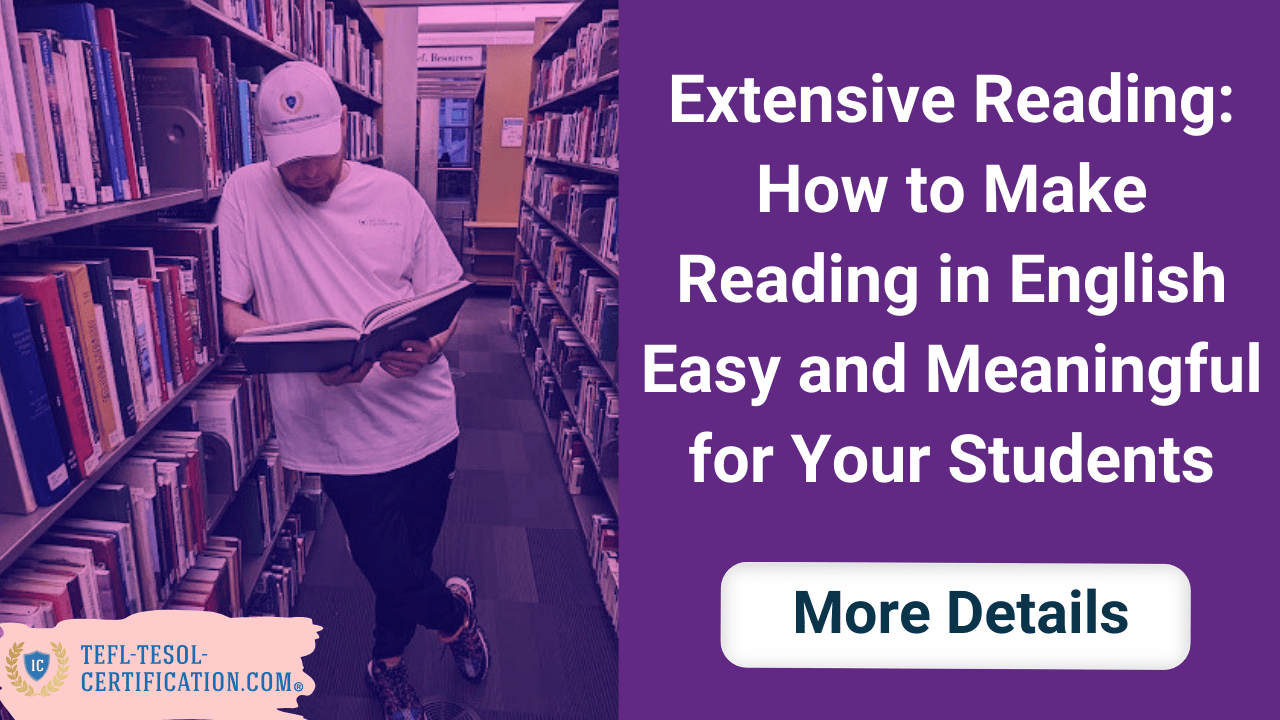🚀 More students, 💰 higher income, 🌍 complete freedom! ✅ 112 verified platforms with top rates ⏳ Flexible schedule – work whenever and as much as you want 🎯 Simple requirements – start earning right away 💎 Boost your career and income by teaching students worldwide!
Table of contents
- Task-Based Learning in Plain English
- TBL Lesson Design: A Step-by-Step Framework
- Practical TBL in Action: Scenarios by Level
- Task-Based English Lessons: Topics and Ready-to-Use Mini Plans
- TBL ELT Implementation: Bringing It to School and Online
- Connecting TBL with TEFL/TESOL
- Rapid TBL Lesson Builder for Any Topic
- FAQ: Quick Answers
- Step-by-Step Example: Full TBL Lesson “Booking vs. Negotiating” (B1)
- Mixed Levels and Large Groups: Keeping Momentum
- TBL Homework: Reinforcement Without Boredom
- Functional Language Matrix: What Students Actually Say
- PPP vs. TBL: Why Rethink Habits
- Conclusion
The Task-Based Learning (TBL) method is a communicative approach to teaching English that emerged in the late 1980s as part of the shift from theoretical instruction to practice-oriented learning. Its aim is to help learners use English as a tool for solving real-life problems: discussing travel routes, preparing presentations, or conducting negotiations.
TBL grew out of the communicative approach when educators noticed that students progress faster when they use language to achieve specific goals rather than complete abstract exercises. In such lessons, grammar and vocabulary are not treated as separate topics; they become natural means of communication.
This approach delivers tangible results: fluency rises, motivation increases, and learners gain confidence. Students speak more freely, fear mistakes less, and see a clear purpose in every lesson. For teachers, TBL is a way to make classes lively, dynamic, and more productive.
Let’s look at how to prepare a lesson using TBL principles — and why this approach simplifies the teacher’s work while improving student outcomes.
Task-Based Learning in Plain English
Formally, TBL is an approach in which language “grows” from solving a meaningful task — not the other way around. Put simply, we place learners in situations where the task cannot be completed without English: booking accommodation, aligning with a colleague, defending an idea, or drafting a process map. The task pulls vocabulary and grammar along with it, like a boat trailing waves.
When I moved from rule-heavy explanations to TBL, I noticed one thing: the extra noise faded and attention to meaning increased. The room fills with the squeak of a marker and quick negotiations — “Deal? — Deal.” Afterwards, we calmly focus on the language that proved necessary. That is exactly why I love TBL.
- Meaning first: action precedes form.
- Real product: a template email, a checklist, a poster, or a negotiation recording.
- Co-creation: learners plan, choose, debate, and defend decisions.
TBL Lesson Design: A Step-by-Step Framework
I organize a lesson around three pillars. It isn’t magic — it’s a sequence that saves time.
| Stage | Objective | Teacher Actions | Learner Actions | Product/Outcome |
| Pre-task | Activate meaning and context | Brief scenario, task introduction, brainstorm functional phrases | Activate topic, share experiences | Draft plan, phrase bank |
| Task cycle | Complete the task in English | Monitor and note language without interrupting | Speak, write, negotiate, agree | Finished product: presentation, email, minutes |
| Language focus | Polish form and accuracy | Extract “language from the task,” provide targeted practice | Notice, practice, reformulate | Short exercises on needed forms |
- Goals: one communicative goal (what to accomplish) and one language goal (functions/structures needed).
- Materials: role cards, templates, timer, online whiteboard.
- Differentiation: flexible roles, varied scaffolds, pair/group formats.
- Assessment: a simple 4–5-criteria rubric visible before the lesson begins.
Timing Templates: 45 / 60 / 90 Minutes
- 45 minutes: 5’ pre-task → 20’ task → 10’ report → 10’ language focus.
- 60 minutes: 10’ pre-task → 25’ task → 10’ report → 15’ language focus.
- 90 minutes: 10’ warm-up → 15’ pre-task → 35’ task → 10’ report → 20’ language focus.
During the task cycle, I do not correct errors on the spot. Students build fluency without tripping over every comment, while I take notes. Later comes precise, targeted feedback.
Practical TBL in Action: Scenarios by Level
How does this look “on the ground”? Below are lesson fragments I’ve used from pre-intermediate to upper-intermediate, offline and online.
- Service Problem-Solving (A2–B1): pairs role-play a support call. Product — a brief report: “Problem → Steps → Resolution.”
- City Hackathon (B1–B2): teams design the “ideal weekend route.” Product — a map + a six-point plan + a 90-second pitch.
- Pitch & Negotiate (B2): “sell” a training idea, agree on budget and timelines. Product — a mini memorandum.
- Customer Journey Map (B1): outline the path from inquiry to purchase. Product — a board filled with sticky notes.
- Meeting Makeover (B1–B2): redesign a boring meeting into an effective one. Product — a new agenda and ground rules.
Classroom detail: someone always taps a foot when time is running out. The timer beeps, the group laughs. “Two minutes!” — and they rush to finish. After reports, we collect language: modals for polite requests, agreeing/disagreeing phrases, and discourse markers.
Task-Based English Lessons: Topics and Ready-to-Use Mini Plans
Below are 12 quick ideas. Use them like building blocks and adapt to your group.
- Survival Travel (A2): plan an itinerary and budget. Language — prices, transport, polite requests.
- Healthy Week (A2–B1): create a menu and workout plan. Language — frequency, imperatives, advice.
- Micro-Interview (B1): prepare six questions and record a short interview. Language — past simple/continuous, clarification.
- Problem–Fix–Outcome (B1): work through a client case. Language — cause–effect connectors.
- Start-up One-Pager (B1–B2): complete a one-page project brief. Language — present simple, value proposition, hedging.
- Guide for a Newcomer (A2–B1): write a guide for a new student. Language — giving directions, dos & don’ts.
- Meeting Roles (B1): assign and moderate roles. Language — turn-taking, agreeing/disagreeing.
- Feedback Sandwich (B1): give and receive feedback. Language — softeners, positive markers.
- Festival Pitch (B1–B2): design and pitch a mini event. Language — persuasive language.
- Policy Rewrite (B2): turn a “dry” policy into plain English. Language — nominalization vs. verbs.
- Data Story (B2): explain a chart to a colleague. Language — comparisons, trends, assumptions.
- Ask Me Anything (any level): Q&A with a guest or the teacher. Language — questions and follow-ups.
TBL ELT Implementation: Bringing It to School and Online
When we introduced TBL into the timetable, we launched a “small pilot”: one class, four weeks, one shared rubric. It lowered anxiety and showed results. Then we scaled.
- Start small: choose 1–2 groups and one monthly theme (for example, “customer communication”).
- Shared rules: 3–4 assessment criteria, a common lesson-plan template, consistent task design.
- Method board: short Friday meetings — 20 minutes for idea exchange.
- Resources: a shared folder with role cards, timers, report forms, checklists.
- Communication with parents/admin: clarify that TBL is not “just play,” but goal-driven practice with measurable outcomes.
For online classes, I keep it simple: cameras optional, microphones active, roles assigned in advance, and reports recorded on the board. Avoid tool overload: two clear tools (slides + board) beat four “trendy” ones.
And start earning money 💸 by teaching English in your own country, abroad, or online from anywhere on the planet! 🎁 Gifts and bonuses: professional support from your personal coach 🧑🏫 and job placement assistant 💼.
Low-Stress Evaluation: Rubrics and Feedback
- Five criteria are enough: task completion, clarity of speech, interaction, accuracy, vocabulary.
- Weighting: lean towards fluency early in a module, then gradually increase accuracy weight.
- Self-assessment: before reporting, students rate their readiness on three points — it improves reflection.
- Feedback sheet: record strong phrases and “growth points” and hand out copies.
I like a rapid reflection format: “What worked? What needs work? Which one phrase will you use tomorrow?” Short, practical, no red pens.
Common Pitfalls and How to Fix Them
- Task too complex: break it into steps and add supports: sample dialogue, function cards, timeline.
- Too much front-loading: keep the intro within 3–7 minutes and move straight to the task.
- No time for reporting: reporting is the heart of the cycle; trim the pre-task.
- One role for everyone: rotate roles: moderator, presenter, recorder, observer.
- Grammar overload: let language serve the task rather than a rigid syllabus.
Connecting TBL with TEFL/TESOL
I have taught for 12+ years and delivered over a thousand lessons, with a solid third in a TBL format. TEFL and TESOL course provide the foundation — methodology, assessment, and working with mixed-level groups. TBL adds movement and product, bringing lessons closer to real life. If you are choosing your path, read a concise explanation of what TEFL & TESOL certification involves and why it matters, and review course options and packages in advance to align time with goals.
- Need a framework? A core teacher-training program that covers lesson planning, objectives, and feedback is a direct bridge to TBL. 🎯
- Unsure about levels? For B1 and above, run the full cycle; at A2, keep tasks shorter and simpler.
- Where to find templates? In your own materials — convert existing exercises into tasks with a tangible outcome.
Rapid TBL Lesson Builder for Any Topic
- Context: one sentence — where we are and what we want to achieve.
- Roles: who moderates, who takes notes, who presents.
- Resources: template, timer, board/files.
- Product: one page, 3–6 points, 90-second report.
- Language: 6–10 support phrases by function — request, clarification, argument, agreement/disagreement.
- Assessment: 4–5 criteria, announced up front.
FAQ: Quick Answers
- Is TBL suitable for beginners? Yes — keep tasks short and supports explicit.
- What about grammar? After the task, highlight forms that emerged in real speech.
- Do I need expensive materials? No. Role cards, a timer, and a simple template are enough.
- How much should the teacher talk? Less than you think — let learners lead the talk time.
Step-by-Step Example: Full TBL Lesson “Booking vs. Negotiating” (B1)
Scene: the timer clicks and the marker glides across the board. The topic — choosing and booking accommodation, where you must ask the price and negotiate late check-in.
- Pre-task (10 minutes). Short story: “You arrive at night; the hotel is full.” Collect functional phrases on the board: Would it be possible to…?, Any chance we could…?, We’re looking for…. Quick rehearsal in pairs.
- Task (20 minutes). Group A — “guests,” Group B — “reception.” Each group has cards with conditions and constraints. Task: agree on room, price, check-in time, and breakfast options. Teacher circulates and notes language.
- Report (10 minutes). Each pair presents: “What did you agree on? What did you concede?” Others ask one clarifying question.
- Language focus (15 minutes). Collect effective phrases, add two or three ways to soften requests and two refusal strategies. Short drill: rephrase blunt sentences into polite ones.
- Reflection & homework (5 minutes). Three-question reflection and a short assignment: write two emails — one for booking, one clarifying terms.
Classroom note: to strengthen the information gap, hide one crucial detail on each role card. This small secret forces students to listen and clarify.
💡 Unlock the secrets to doubling your teaching income with our exclusive checklist! 🎯 This checklist is designed for English teachers who want to 📈 attract more students and 🔥 keep them engaged for the long term.
Mixed Levels and Large Groups: Keeping Momentum
Real classes are rarely “ideal.” A confident B2 may sit next to a shy A2. Differentiation and transparent roles keep the pace.
- Roles by ability: strong learner — moderator/presenter; mid-level — argument builder; beginner — fact-gatherer and clarifier.
- Supports at different densities: A2 gets phrase cards; B1 gets functional prompts only.
- Jigsaw flow: start with expert groups, then re-form mixed teams to share knowledge.
- Visible time map: a clear timeline on the board reduces anxiety and maintains pace.
- Quiet learners: assign recorder role plus a criterion like “ask at least two clarification questions.”
In large groups, try “time auctions”: each team has 60 seconds to “buy” an extra minute by explaining — in English — why they need it. It’s playful, but purposeful.
TBL Homework: Reinforcement Without Boredom
- Micro-task: record a 60-second audio report on a decision (problem → 3 steps → outcome).
- Info-gap email: one writes a request, the other replies with missing details; then they swap.
- Photo case: from a workplace photo, generate questions and assumptions.
- Weekly scenario: plan two short tasks and self-assess using the rubric.
Homework remains task-based: clear goals, tangible products, transparent criteria. No “100 sentences” drill sets.
Functional Language Matrix: What Students Actually Say
| Situation | Functions | Support Phrases |
| Arrange a meeting | request, clarify, confirm | Could we…?, What about…?, Let’s confirm… |
| Resolve a client issue | paraphrase, apologize, propose a solution | So you’re saying…, I’m sorry to hear…, How about we… |
| Present an idea | structure, argue, handle questions | First… then… finally…, Our key point is… |
This matrix grows out of practice, not a textbook. I add to it after every cycle so learners see their own phrases become part of the course.
PPP vs. TBL: Why Rethink Habits
The PPP model (“Present — Practice — Produce”) is convenient and familiar, but its final product can be decorative. In TBL, the product is the core of the lesson: without it, the task is incomplete. I do not “fight” PPP; where reflexes and flexibility are needed, I use TBL. Where precise control of form matters, I keep compact PPP inserts at the end of a cycle.
- When TBL is essential: negotiations, service situations, presentations, projects.
- When PPP is appropriate: when a new form is complex and comprehension-critical (e.g., conditionals) and accuracy must precede the task.
- Hybrid: meaning-led pre-task → small PPP focus → task → report → language focus.
Conclusion
Task-Based Learning is not a buzzword; it is a way to bring meaning back to the lesson. The task provides energy, the product creates focus, and English becomes a tool learners want to pick up. Choose one scenario from this article and trial it over the next four weeks. Then return to your notes and ask: “What worked? What should be improved?” 🚀
Terms used:
TEFL

York Fern
An English instructor with 12+ years of experience. I work for an online school and travel the world, teaching students from various countries, leveraging my TEFL/TESOL certification. Seeing the world's oceans, mountains, and cities with my own eyes has given me a profound appreciation for the importance of quality education and international communication.
and start earning by teaching English in your country, abroad, or online from anywhere in the world! Order the course with a 50% discount 💸 and receive as a gift the support of a personal coach 👨🏫 and job placement assistant! 🎁🚀 Hurry, limited spots available! 🏃♂️💨
💡 Unlock the secrets to doubling your teaching income with our exclusive checklist! 🎯 This checklist is designed for English teachers who want to 📈 attract more students and 🔥 keep them engaged for the long term.
🚀 More students, 💰 higher income, 🌍 complete freedom! ✅ 112 verified platforms with top rates ⏳ Flexible schedule – work whenever and as much as you want 🎯 Simple requirements – start earning right away 💎 Boost your career and income by teaching students worldwide!
choose us?




